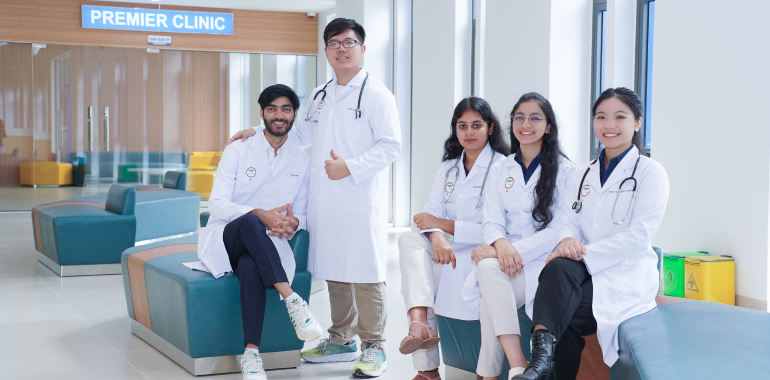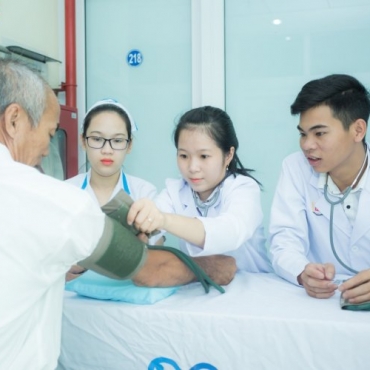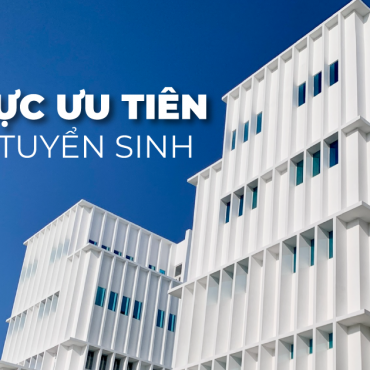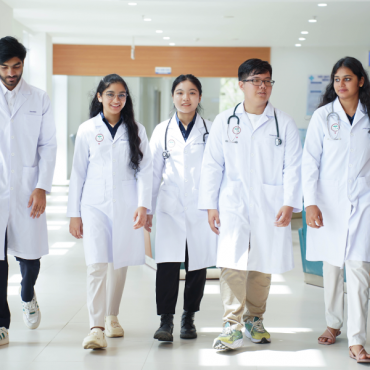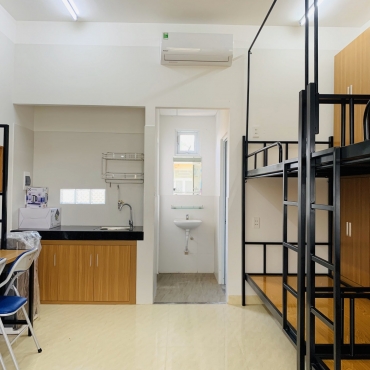Contact Admission
International Collaboration
Hospital - Phan Chau Trinh University of Medicine: A bright spot in medical training
With a training model that closely combines the Hospital and the School, Phan Chau Trinh University (PCTU) is a bright spot in medical training among non-public schools. This combination helps students to have early clinical exposure and more time to develop professional capacity, improving their ability to handle medical situations.
Source: https://www.vietnam.vn/en/vien-truong-dai-hoc-y-khoa-phan-chau-trinh-diem-sang-trong-dao-tao-y-khoa
The Hospital - University ecosystem operates synchronously by one entity
The Hospital - University model is a close combination between a training facility (university) and a practice facility (hospital), where medical students both learn theory and have access to clinical practice in a real medical examination and treatment environment.
At Phan Chau Trinh University, this model is implemented consistently and systematically, when both the university and the practice hospital system are invested, managed and operated by the same entity. This integrated structure creates synchronization from the training program to the practice environment, forming a modern medical education superstructure, shaping a long-term vision, creating a mission to serve public health and building a standard medical culture.
The school's private practice hospital system has a total capacity of 1,500 beds and more than 400 clinical lecturers who are professors, associate professors, doctors, masters and specialists 1,2. Of which, Phan Chau Trinh University of Medicine Hospital is located right on the school campus and a chain of 8 other hospitals spread from Da Nang, Quang Nam, Nha Trang, Ho Chi Minh City and the Mekong Delta. This is a rare advantage, helping medical students practice clinical practice of a variety of regional diseases. With the ratio of practice and internship time at the hospital accounting for 70% of the entire course, it helps new students form the personality of future physicians very early, regularly accessing medical records, real patients, care - treatment processes and modern medical equipment.
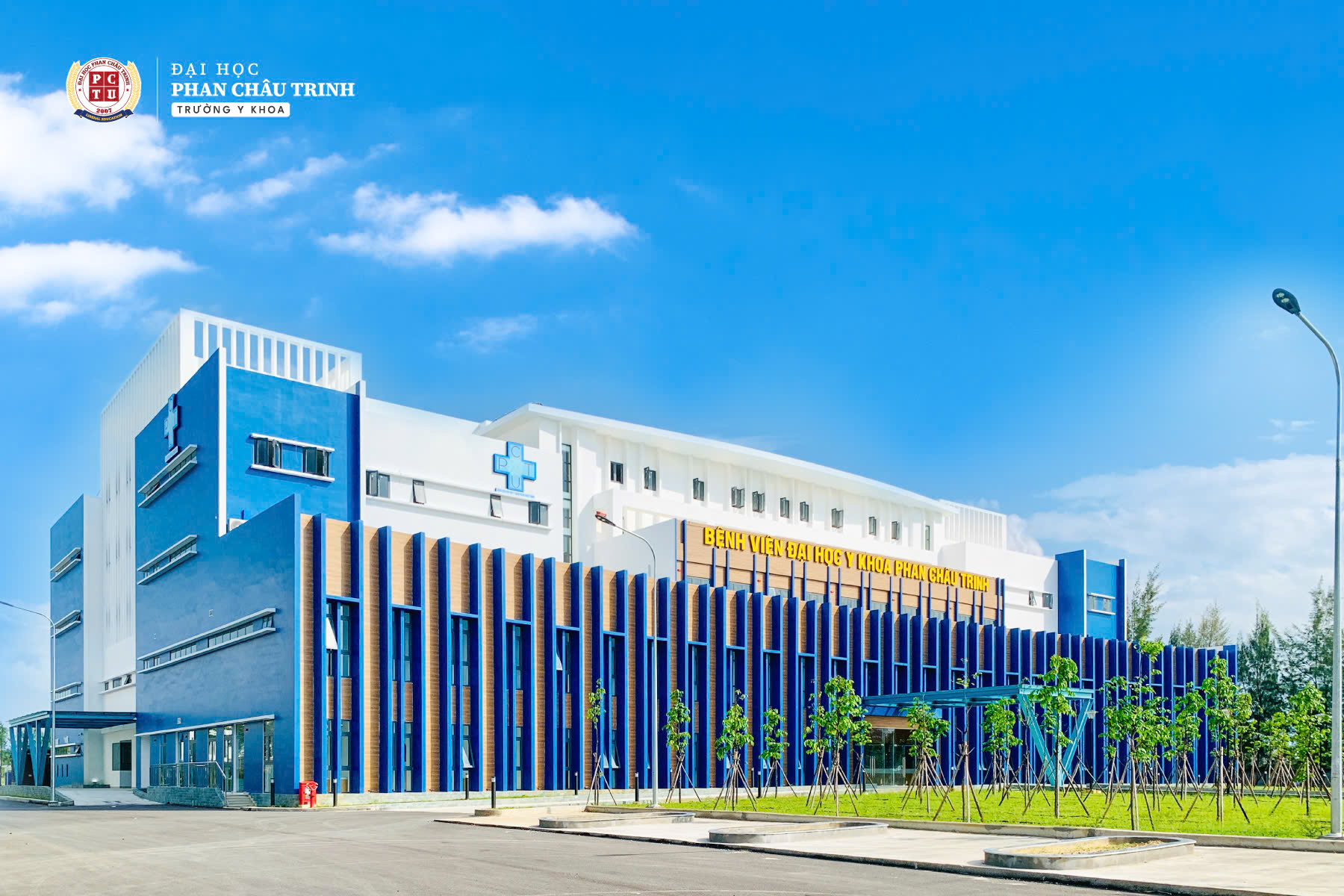
Fig 1. Phan Chau Trinh University of Medicine Hospital
Another highlight of this model is that the theoretical lecturers are also the doctors who directly guide clinical practice for students at the hospital. The unity between theoretical teaching and clinical practice not only ensures high practicality in training but also contributes to improving the quality of medical examination and treatment, when the team of doctors regularly updates their knowledge, participates in scientific research and innovates teaching methods.
Active clinical teaching and learning methods, based on real-life situations and competency-based assessment. Students not only practice professional skills but also develop critical thinking, clinical decision-making ability and professional attitudes - important factors to become a comprehensive physician in the era of modern and personalized medicine.
Compatible investment infrastructure between University and Hospital
To ensure the quality of training of standard medical human resources, investment in teaching at schools and hospitals must also be compatible and synchronized. Thereby, so that learners can recognize the consistency between theory and clinical practice on patients. The school has invested in facilities serving teaching, including: a hospital simulating preclinical skills, a digital medical library, a biomedical research center, anatomical practice area using donated human cadavers... along with many advanced equipment.
Notably, the first preclinical skills simulation hospital model in Vietnam uses virtual patient simulation technology, robots, 3D models, or simulation situations to help learners solve medical situations from basic to complex and fully experience the process as in a real hospital environment. Here, students are taught: "Make hundreds of mistakes in simulation situations so that you don't make a single mistake on your real patients."
This is a foundation for the school to implement a competency-based medical training program, while helping students to maximize their professional capacity, ready to meet the requirements of modern medicine.
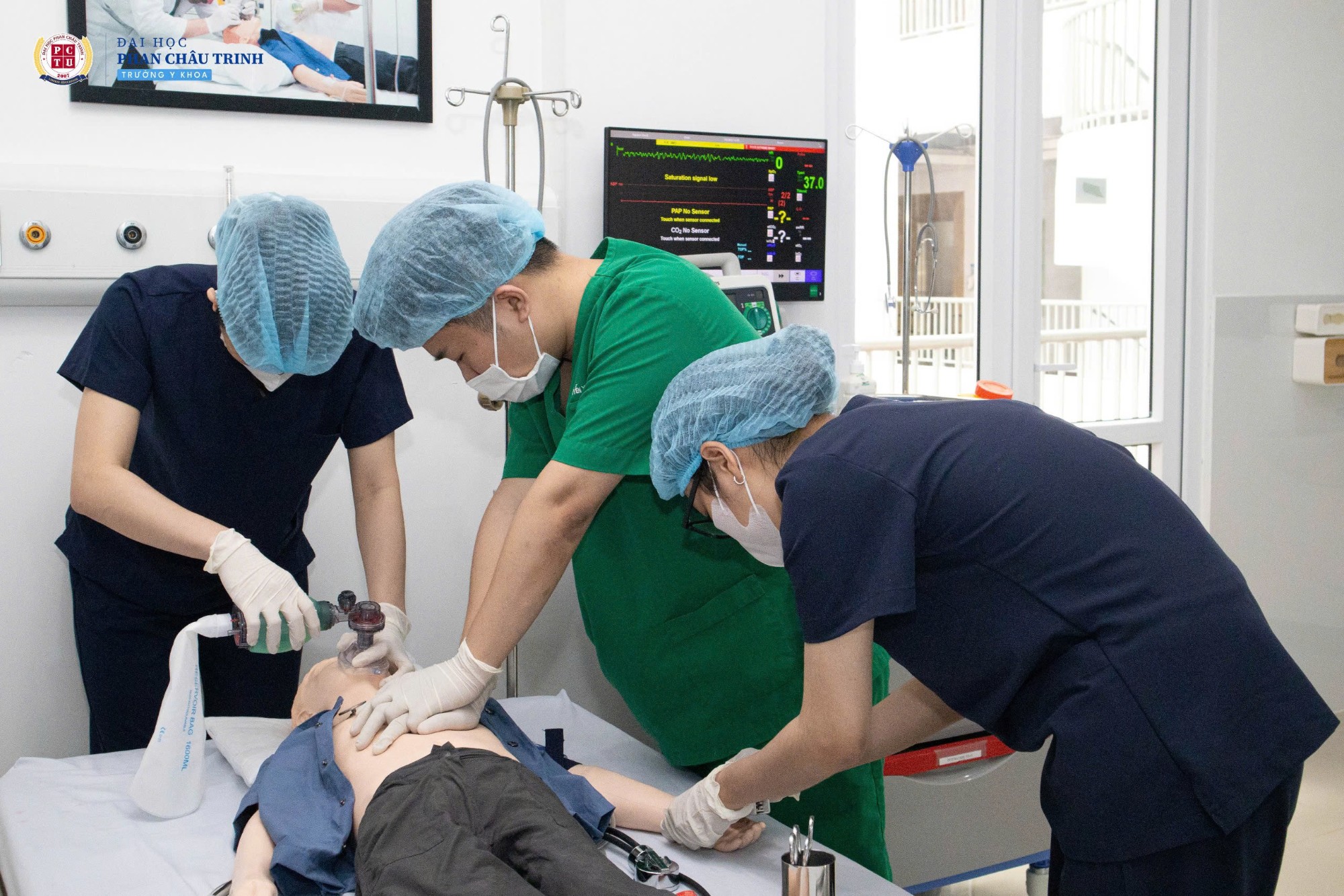
Fig 2. Medical Students Practice Preclinical Skills at Simulation Hospital
To ensure standard clinical training, Phan Chau Trinh Medical University implements clinical instruction according to the formula 1/5.1, meaning one clinical instructor instructs a maximum of 5 students on one hospital bed. This ratio not only ensures personalized interaction but also creates conditions for students to be closely supervised, practice clinical skills, develop critical thinking and the ability to make accurate medical decisions in a real-life environment. In addition, the number of medical students enrolled at the school is also limited to ensure the quality of teaching and maintain this ratio.
Phan Chau Trinh Medical University - Hospital builds a standard, disciplined and creative medical training environment, focusing on patients with the foundation of precision and humanity. The practice hospital operates as an academic hospital with integrated clinical - training - research processes.
Medical training with the Hospital - University model aims to train a generation of students who are not only good at medical theory, but also good at critical thinking, know how to use artificial intelligence , have a solid ethical foundation , thereby creating a generation of doctors with global capacity , adaptable to modern medical technology and personalized medicine
For furthur information:
- Programs
- Tuition and Fees
- How to Apply
- Facilities
- Activities & Experiences
- Student Life
- Follow us on Facebook
Contact us:
Admission Office:
- Mr. Nguyen Van Minh - Admission Office – Phan Chau Trinh University
- Address: 09 Nguyen Gia Thieu street, Dien Ban Dong ward - Da Nang city
- Tel: (+84235) 3 757 959 or +84.0981.559.255
- WhatsApp Number: +84.90.570.949
- Email: tuyensinh@pctu.edu.vn
- Fanpage: www.facebook.com/daihocphanchautrinh
Other admissions
- One-on-one Clinical Training Journey in the United States for PCTU Medical Students ( 15:02 - 04/12/2025 )
- PCTU Students Win 3 Bronze Medals at the International Medical Biochemistry Competition 2025 ( 12:00 - 09/11/2025 )
- Welcoming a french student for postgraduate research internship ( 07:40 - 28/10/2025 )
- Phan Chau Trinh University Awards Over 50 Scholarships in 2025 ( 14:26 - 24/10/2025 )
- A First-Year Student Receives a Scholarship Worth Over 600 Million VND ( 14:20 - 23/10/2025 )
- Nearly 400 freshmen donned white coats during the Opening Ceremony for the 2025–2026 academic year ( 09:08 - 17/10/2025 )
- Inspiring Mentors – Thriving Students ( 08:30 - 10/10/2025 )
- PCTU Becomes a New Academic Destination for International Students ( 08:56 - 08/10/2025 )
- PCTU Nursing Students Begin Psychiatric Care Internship ( 07:45 - 07/10/2025 )
- Two PCTU students Begin Medical InternshipiIn the United States ( 09:38 - 02/10/2025 )



